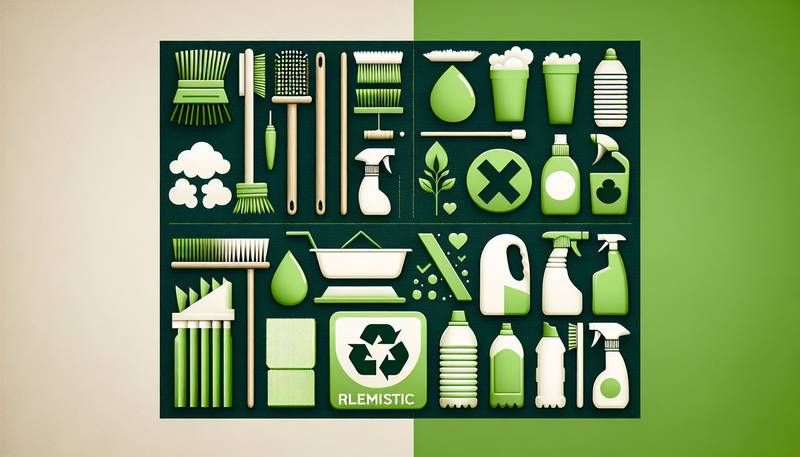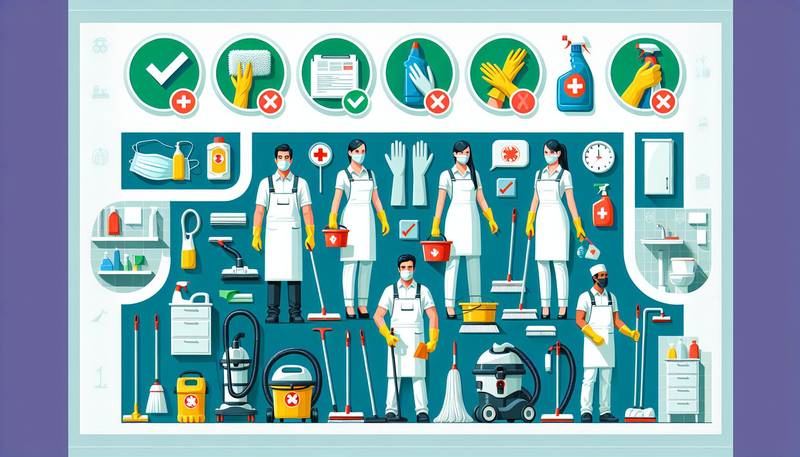The Dos and Don'ts of Green Cleaning Practices
However, it's important to understand the dos and don'ts of green cleaning practices to ensure that we are truly making a positive impact.
Choose the Right Products
When it comes to green cleaning, choosing the right products is essential. Look for cleaning products that are biodegradable, non-toxic, and made from natural, renewable resources. Avoid products that contain harsh chemicals such as ammonia, bleach, and phosphates, as these can be harmful to both the environment and your health. Opt for brands that have certifications such as Green Seal or EcoLogo, as these indicate that the product meets certain environmental standards.
Do Your Research
Before purchasing a green cleaning product, do your research to ensure that it is truly eco-friendly. Many companies market their products as "green" or "natural" without providing any evidence to support these claims. Look for independent reviews and certifications to verify the product's environmental credentials. You can also make your own cleaning products using simple ingredients such as vinegar, baking soda, and essential oils.
Use the Right Tools
In addition to choosing the right products, using the right tools can also help you achieve effective green cleaning. Invest in microfiber cloths, which are more effective at trapping dirt and dust than traditional cleaning cloths. Microfiber cloths can be washed and reused multiple times, reducing waste and minimizing your impact on the environment. Additionally, consider using reusable spray bottles instead of single-use plastic bottles to further reduce your carbon footprint.
Avoid Disposable Products
One of the key principles of green cleaning is to minimize waste. Avoid disposable cleaning products such as paper towels, disposable wipes, and single-use mop pads, as these items contribute to landfill waste. Instead, opt for reusable cleaning tools and cloths that can be washed and reused multiple times. Not only will this help reduce waste, but it will also save you money in the long run.
Practice Water Conservation
Water is a precious resource, and it's important to use it wisely when cleaning. Avoid leaving the tap running while you're cleaning, and consider using a spray bottle to apply cleaning solutions instead of pouring them directly onto surfaces. When mopping floors, use a bucket of water instead of letting the tap run continuously. Additionally, consider collecting and reusing rainwater for cleaning purposes to further reduce your water consumption.
Don't Mix Cleaning Products
While it may be tempting to mix cleaning products to boost their effectiveness, this can be dangerous and harmful to both your health and the environment. Mixing certain chemicals can create toxic fumes or reactions that can be harmful if inhaled or come into contact with your skin. Stick to using one product at a time, and always follow the manufacturer's instructions for proper use and dilution.
Ventilate Your Space
When using cleaning products, it's important to ensure that you have proper ventilation in your space. Many cleaning products contain volatile organic compounds (VOCs) that can be harmful if inhaled in high concentrations. Open windows and doors to allow fresh air to circulate while you're cleaning, and consider using a fan to help improve air circulation. If you're using a particularly strong cleaning product, consider wearing a mask to protect yourself from fumes.
Conclusion
By following these dos and don'ts of green cleaning practices, you can make a positive impact on the environment and create a healthier living space for yourself and your family. By choosing eco-friendly products, practicing water conservation, and minimizing waste, you can contribute to a more sustainable future for all. Remember to do your research, use the right tools, and avoid harmful practices to ensure that your cleaning routine is truly green.










